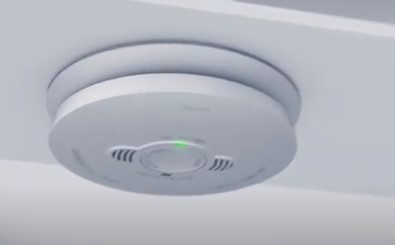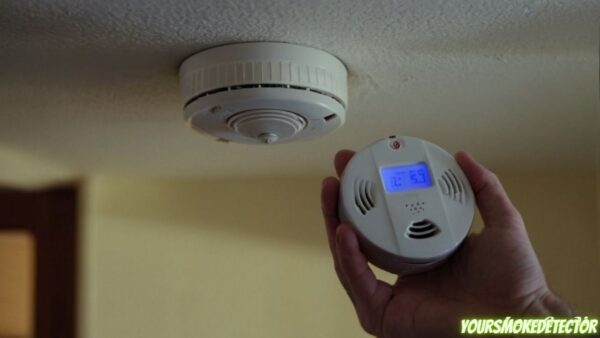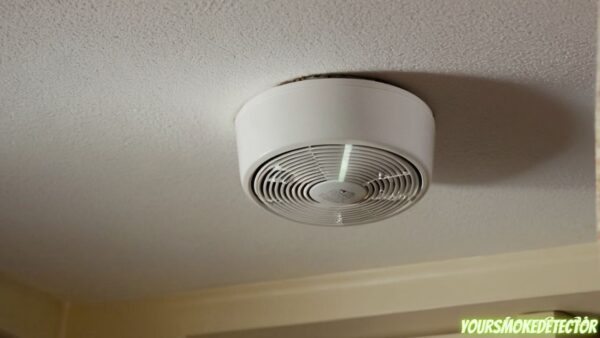Flush heat detectors are a critical component in ensuring safety within residential and commercial properties.
These inconspicuous devices, tucked neatly into your ceiling, are designed to detect sudden rises in temperature that may indicate a fire.
As their name suggests, flush heat detectors are installed in such a way that they sit flush with the ceiling, rendering them unobtrusive yet effective.

This guide will walk you through the importance of these devices, how they work, and the considerations for their installation and maintenance.
| Feature | Description |
|---|---|
| Detection Technology | Thermal detection using fixed temperature or rate-of-rise methods. |
| Activation Temperature | Adjustable temperature threshold for triggering an alarm. |
| Rate-of-Rise Sensitivity | Ability to detect a rapid temperature increase within a specified time frame. |
| Response Time | Time taken to activate the alarm after reaching the activation temperature. |
| Temperature Range | Operational temperature range for effective detection. |
| Mounting Type | Flush mount for seamless integration into ceilings or walls. |
| Compatibility | Integration with fire alarm systems and other safety systems. |
| Sensitivity Adjustment | Capability to adjust sensitivity to minimize false alarms. |
| Reliability | High reliability in detecting heat changes and minimizing false positives. |
| Environmental Resistance | Resistance to environmental factors like dust, humidity, and other contaminants. |
| Tamper Resistance | Measures in place to prevent tampering or unauthorized interference. |
| Power Source | Power requirements, battery backup, or connection to the electrical system. |
| Indicator Lights | Visual indicators to show the status of the detector. |
| Alarm Sound | Audible alarm characteristics and volume. |
| Integration with Building Systems | Compatibility with building automation and monitoring systems. |
| Certifications | Compliance with industry standards and certifications for safety. |
| Maintenance Requirements | Frequency and type of maintenance required for optimal performance. |
| Cost | Initial cost and any ongoing expenses associated with the detector. |
| Dimensions | Physical size and dimensions of the flush heat detector. |
| Manufacturer Warranty | Warranty period and terms provided by the manufacturer. |
1. Components of a Flush Heat Detector

Sensor
The sensor acts as the heart of the flush heat detector. Constructed from a highly sensitive material, it continually monitors the surrounding temperature.
Whenever it senses a significant and sudden rise in temperature, typically indicative of a fire, it triggers an alarm.
Alarm systems
Alarm systems serve as essential tools for ensuring safety and security in both residential and commercial settings.
These systems are designed to detect unauthorized entry, fire, or even medical emergencies, alerting the relevant authorities in real time.
They function as an effective deterrent against potential intrusions, providing peace of mind for property owners.
Connectivity features
The Connectivity features in modern devices are innovative facilitators of seamless data exchange and information flow.
They link devices with each other, and with the internet, thus enabling a broad range of applications, from simple file transfer to complex data synchronization between devices.
Key features include Wi-Fi, enabling wireless connections over a network; Bluetooth, providing short-range wireless connectivity; and LTE and 5G, for high-speed internet access on the go.
2. Working Mechanism
Heat detection process
The heat detection process primarily involves the measurement of thermal energy or temperature.
This is achieved through specific devices, often termed as “heat detectors”, which are sensitive to changes in environmental heat levels.
These devices monitor the ambient temperature and trigger an alarm when a significant increase in temperature, indicative of a fire or other heat-producing event, is detected.
Alarm trigger mechanism
The alarm trigger mechanism is a critical component in the heat detection process.
It is activated as soon as the temperature reaches a threshold set in the heat detector, typically indicative of an abnormal or potentially hazardous heat level.
This mechanism immediately initiates a response, such as ringing an alarm bell or sending a signal to a remote monitoring station.
3. Installation Process
Choosing the right location
Selecting the right location for installation is pivotal to ensure optimal functioning. A place devoid of obstructions and with clear access to power supply is ideal.
It’s also crucial that the location chosen is easily accessible for maintenance and troubleshooting.
Step-by-step installation guide
Unpacking the Product:
Begin by carefully unboxing your product. Ensure all components are present as listed in the user manual. It’s prudent to check for any visible signs of damage or missing parts at this early stage.
Assembling:
Follow the assembly instructions detailed in the user manual. Use the correct tools as specified, and take care not to force any parts together as this may lead to damage.
Power Connection:
Once assembled, connect the product to a power source. Check to verify that the power indicator light comes on, signaling that the product is receiving power.
Configuration:
Configure the product settings as per your requirements. This could include setting the date, time, user settings, and other specific features of the product.
Testing:
Finally, test the product to ensure it operates as expected. If you encounter any issues, refer back to the troubleshooting section of the user manual.
4. Maintenance and Troubleshooting
Regular maintenance practices
Regular maintenance is crucial to keep your systems functioning smoothly and efficiently. This process could entail routine check-ups and timely updates of software.
Regular maintenance helps avoid sudden system breakdowns, increasing the longevity and reliability of your systems.
Troubleshooting common issues
Troubleshooting common issues is an essential aspect of system maintenance. It involves identifying, diagnosing, and resolving problems that might impair system performance.
This process could range from dealing with minor hiccups, such as software glitches, to more significant issues like hardware failures.
Proactive troubleshooting not only minimizes downtime but also prevents further damage to your systems.
5. Key Advantages of Flush Heat Detectors
Enhanced safety
Flush heat detectors offer an enhanced level of safety due to their high sensitivity to rapid increases in temperature.
They are less prone to false alarms from mundane activities, like cooking or smoking, which makes them an ideal choice for both residential and commercial settings.
These detectors can identify potential fire risks sooner, providing crucial extra time for evacuation and minimizing damage.
The early detection capability of flush heat detectors significantly contributes to their enhanced safety feature.
Peace of mind
Peace of mind can be described as a state of mental and emotional calmness, free of worries, fear, and stress. It is a desired state of tranquility that allows individuals to focus on the present moment, and appreciate the beauty of existence.
In today’s fast-paced world, attaining peace of mind might seem challenging, but it is not unattainable.
Key practices such as mindfulness, meditation, and disconnecting from unnecessary negativity can foster peace of mind.
Conclusion
Achieving peace of mind is an attainable goal, not a lofty dream.
Despite the whirlwind of our modern lives, we can find tranquility through regular mindfulness practices, consistent meditation, and a conscious effort to disconnect from negativity.
These strategies offer a solid foundation to cultivate a serene mind amidst chaos. The key takeaway is:
In the pursuit of peace, simplicity and consistency are a powerful combination.
FAQs
What is the purpose of a heat detector?
A: A heat detector’s purpose is to detect a significant rise in temperature, often indicating a fire, and trigger an alarm.
What are the two basic types of heat detectors?
A: The two basic types of heat detectors are rate-of-rise detectors and fixed temperature detectors.
What is the difference between a smoke detector and a heat detector?
A: While both devices alert for potential fires, a smoke detector responds to the presence of smoke, while a heat detector responds to changes in temperature.
How to Stop Humidifiers from Setting off Smoke Detectors
Nest Smoke Detector Blue Light Circling
Smoke Detector Goes off When Heater Turns On
How to Burn Incense Without Setting off Smoke Detecto



